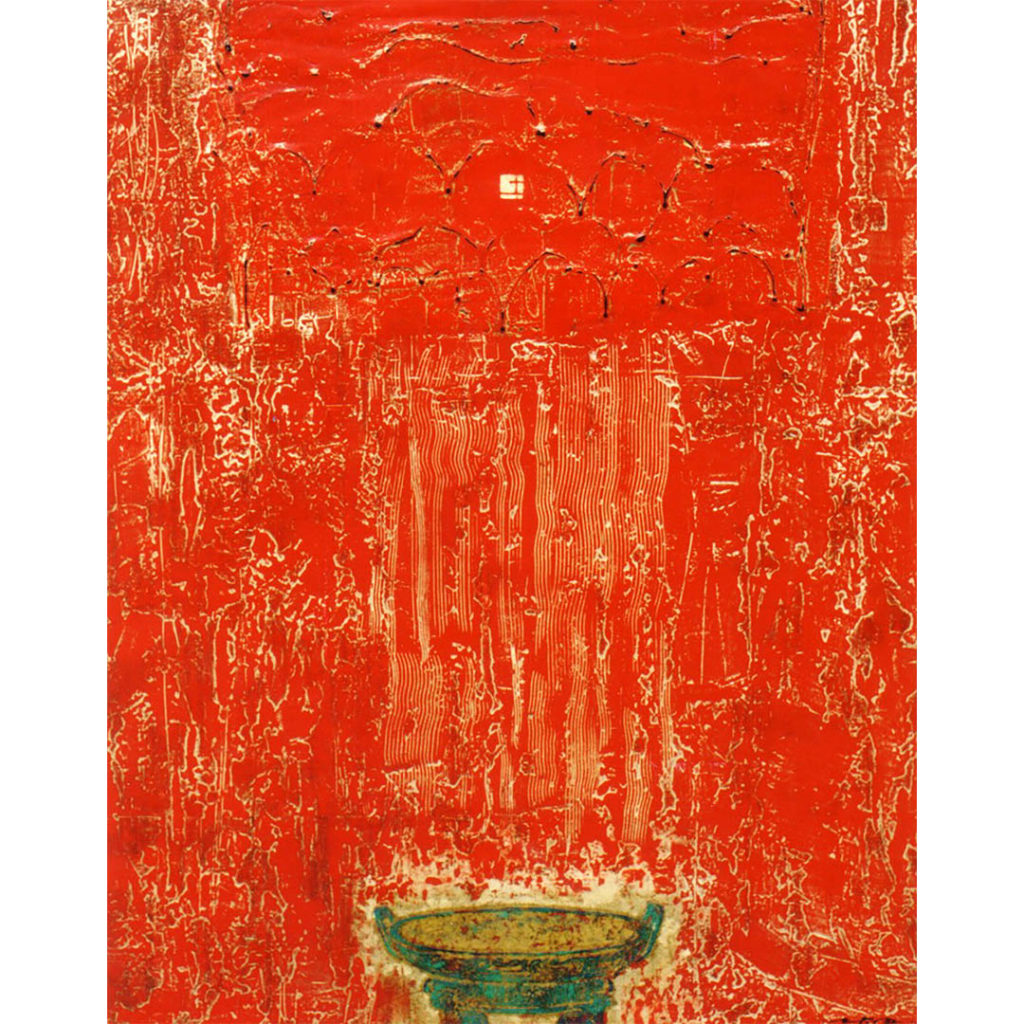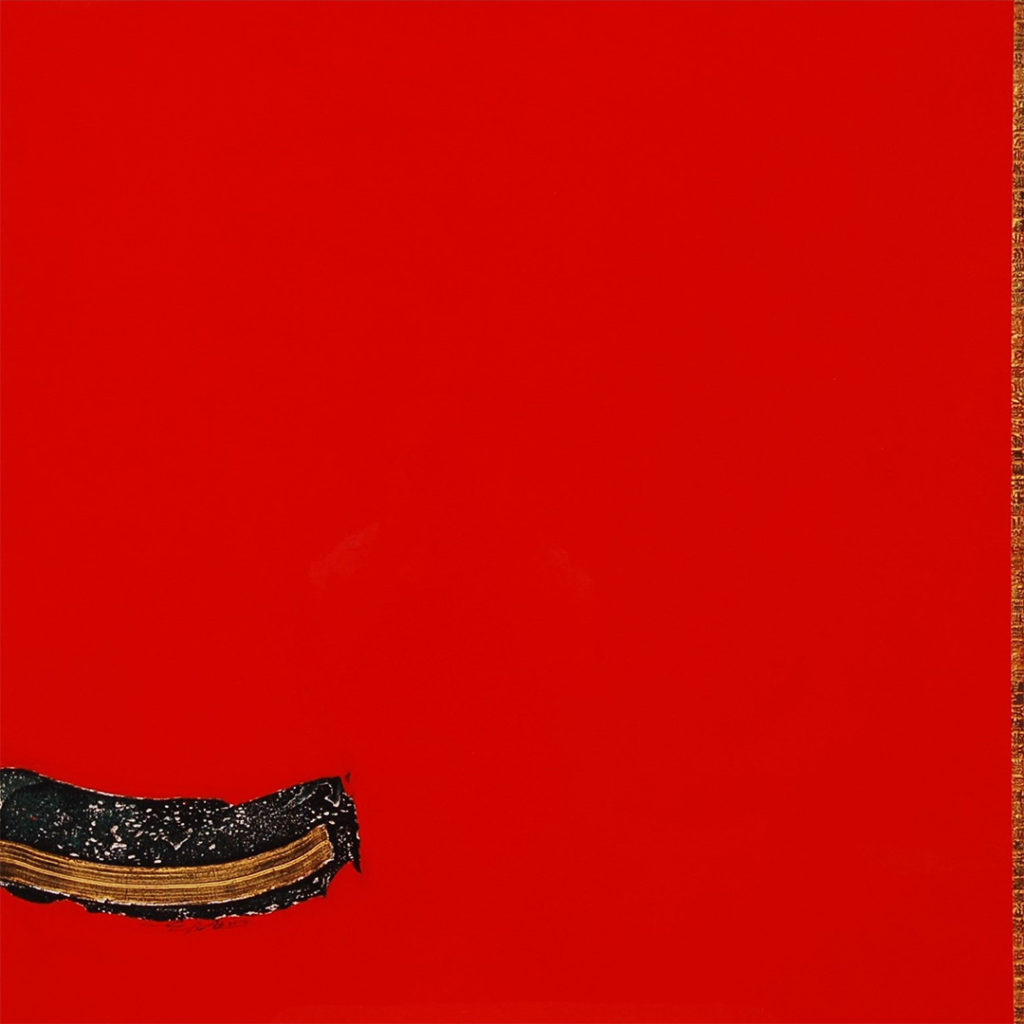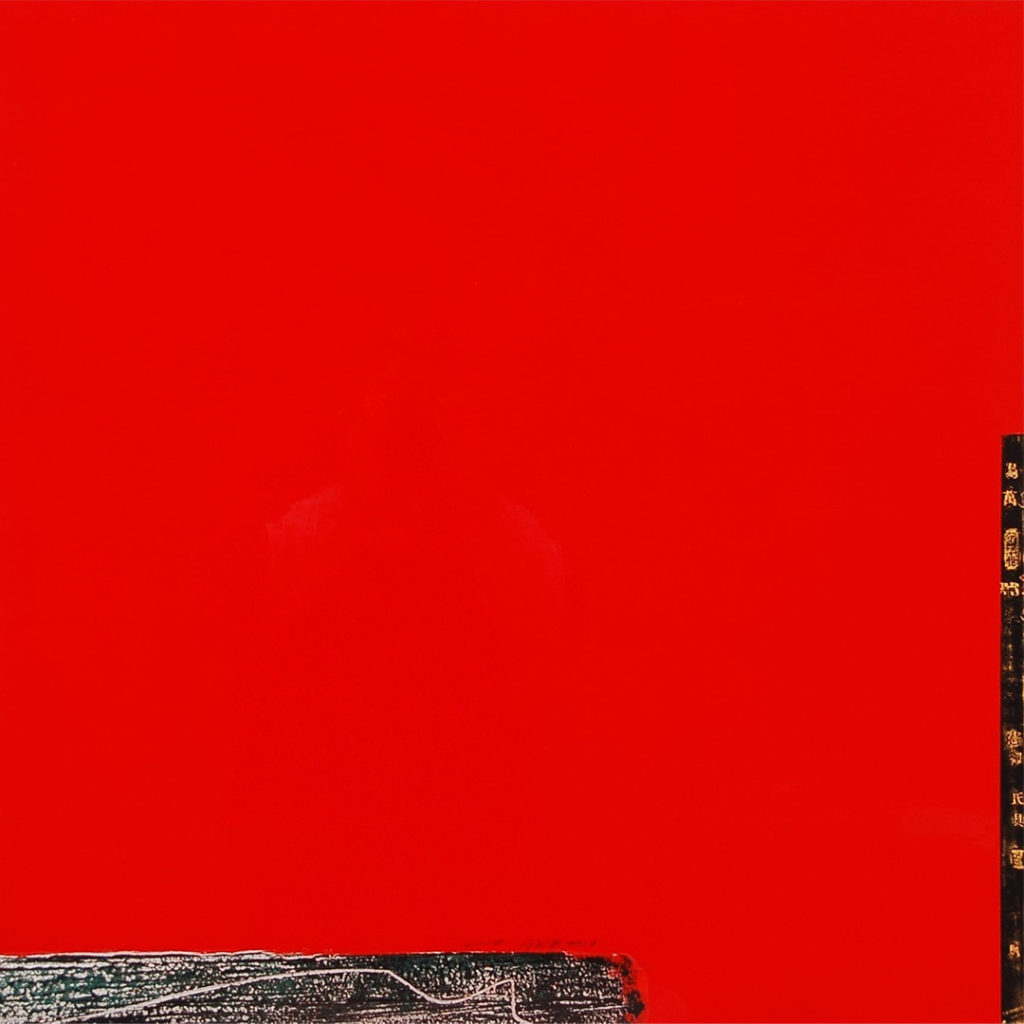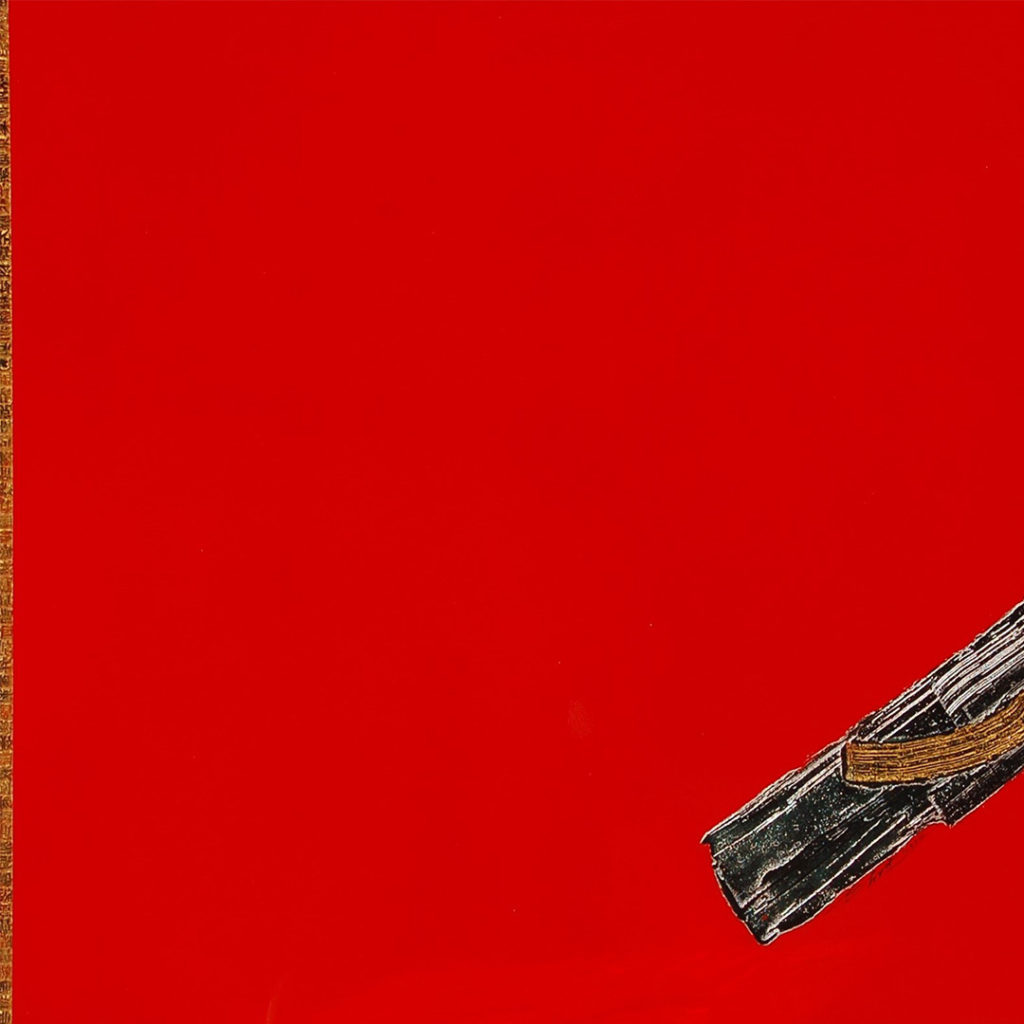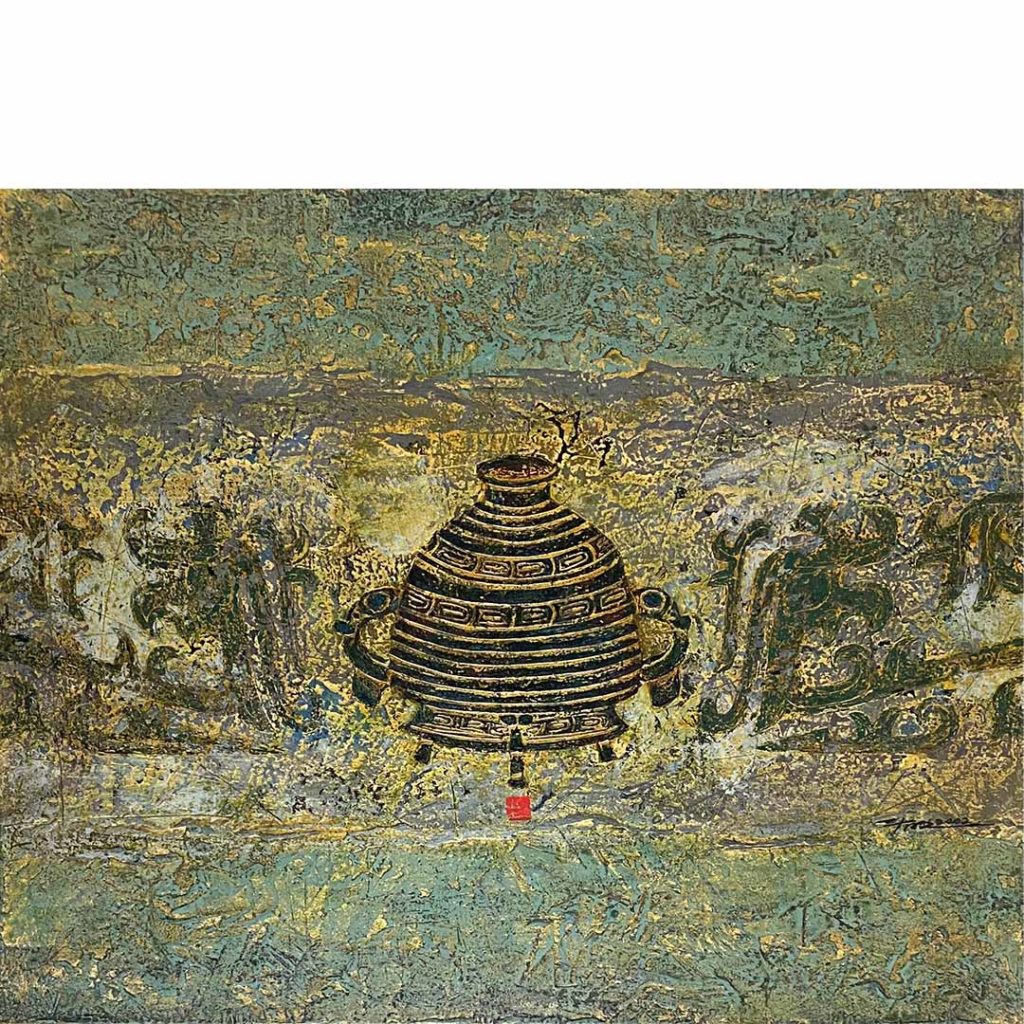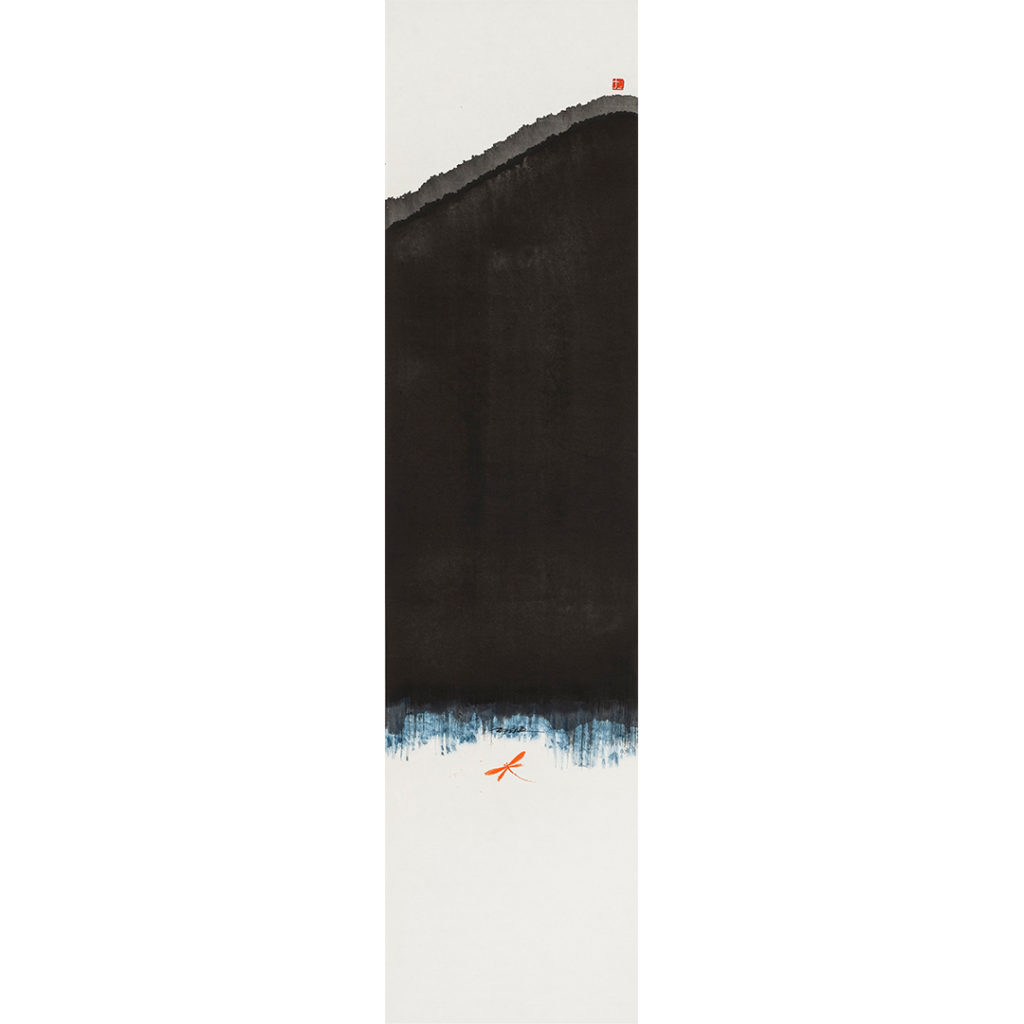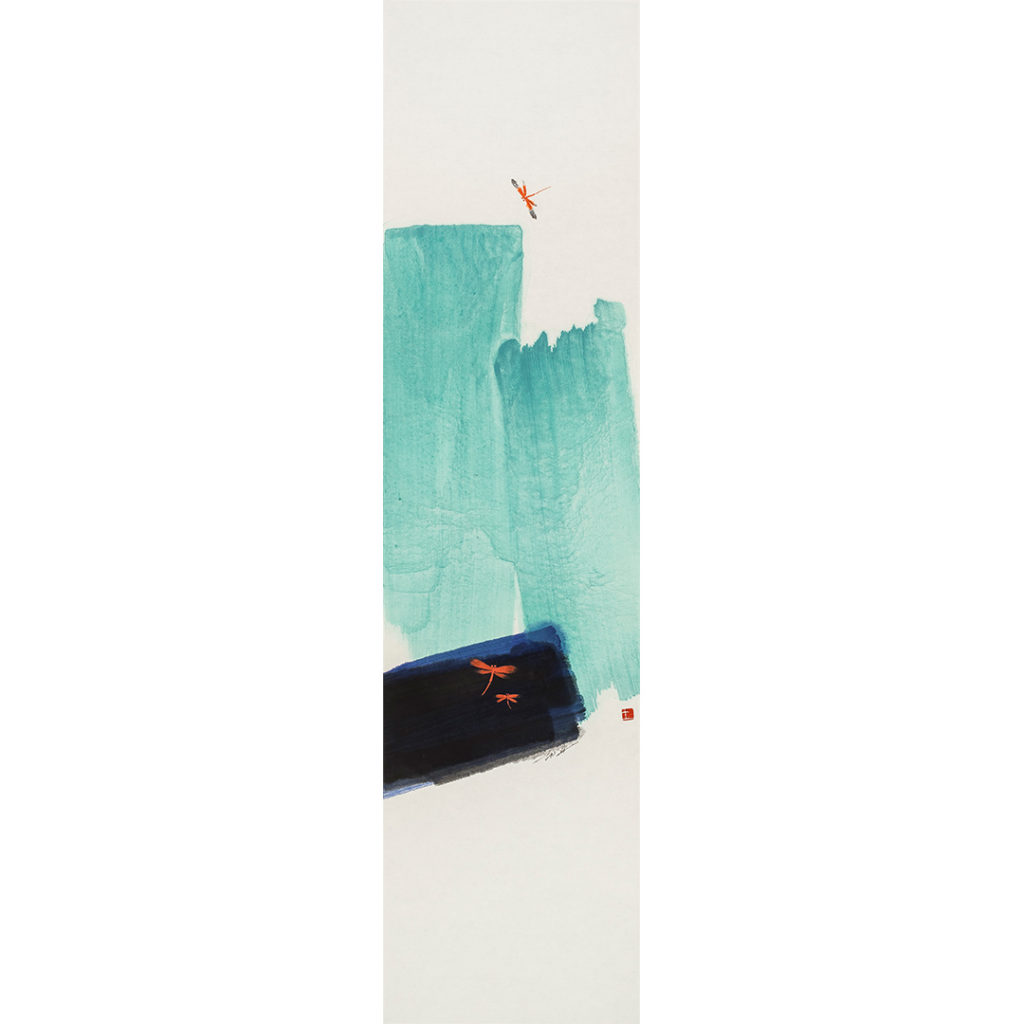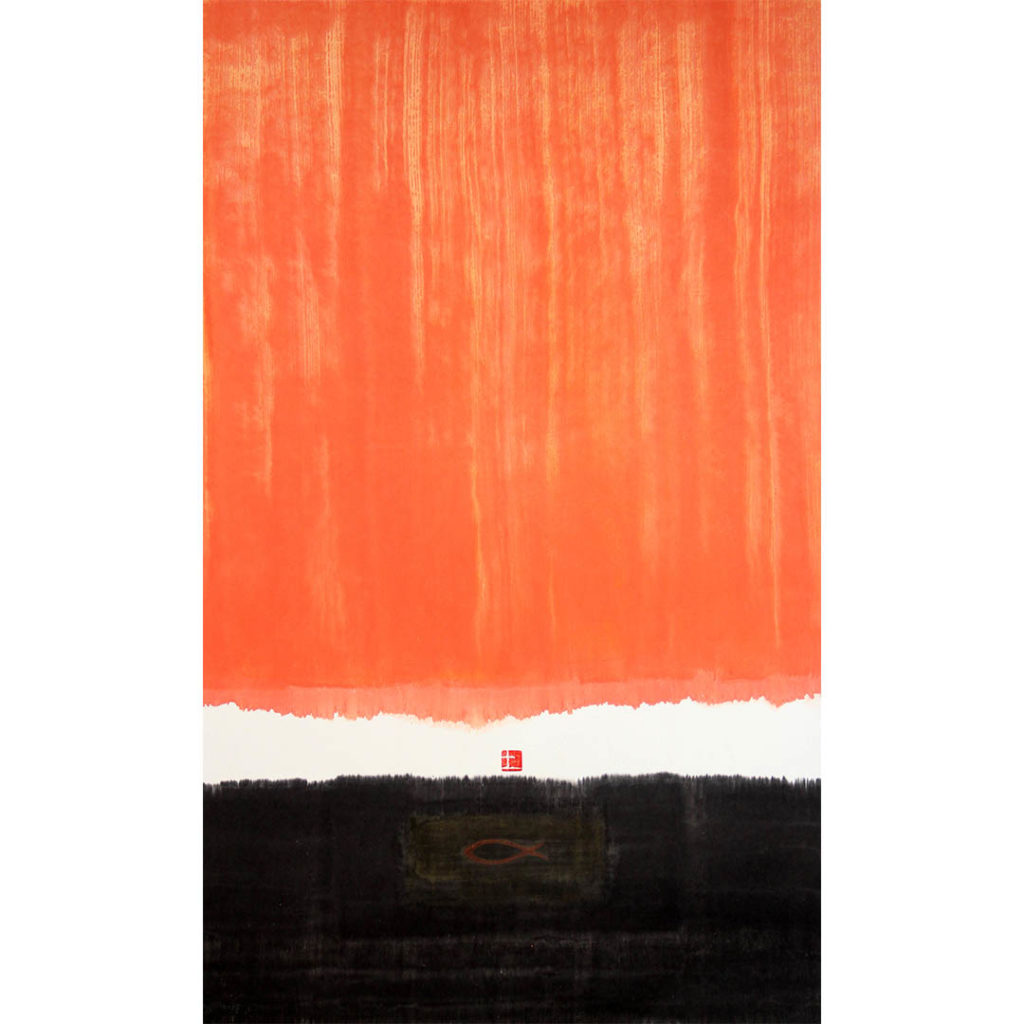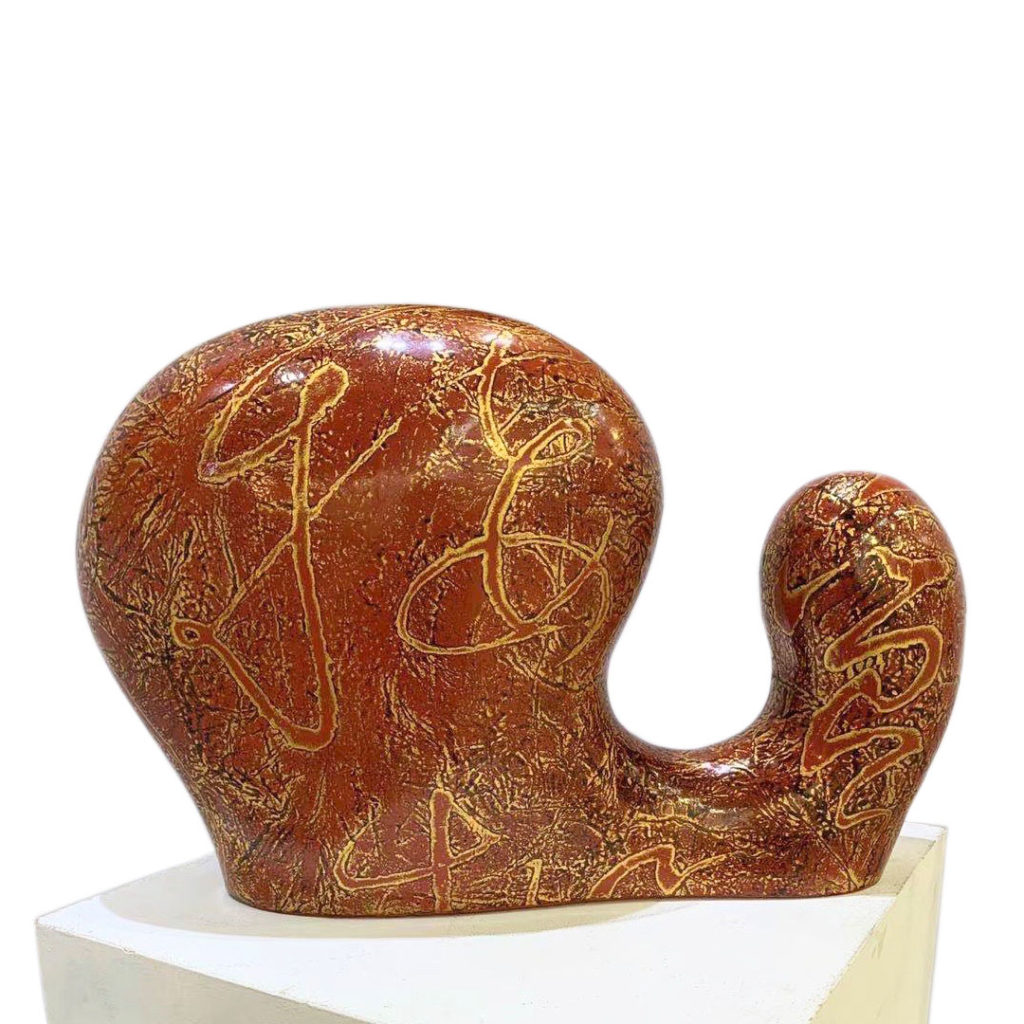HE CHUNYE
賀春業
B.1968
Professionally-trained lacquer artist, He ChunYe’s works reveal glimpses of the splendor of ancient Chinese civilization and culture through distinctly modern expression. His artistic creations feature a visual language including classical symbols of China’s history and its antediluvian culture, such as images of bronze vessels, motifs and drawings, rubbings of inscriptions as well as distinct black, red and gold hues of ancient lacquer ware.
He ChunYe was born in 1968, Harbin, China. In 1989, he graduated from the Central Academy of Fine Arts & Crafts, majoring in Lacquer Painting. From 1992 to 1996, he lectured at the Fine Art Faculty of Harbin University and was appointed Deputy Head of Arts & Design Research Center. In recent years, he has become a leading artist in Chinese modern lacquer art. He is currently a member of the International Lacquer Cultural Society.
Over his career, He ChunYe has fulfilled numerous large-scale murals for public and private commissions: Wanbo Cultural City and the Inner Mongolia Sports Center; Hotel Fodi in the city of Yichang, China; and for China’s consulate offices in New York, Korea, India, Guyana, Saudi Arabia, and the visa-processing hall of Hong Kong’s Immigration Department. His works have been featured in several art magazines such as Realm of Beauty, Modern Art & Décor and Compendium of Modern Chinese Art, and are acquired by commercial organizations and private art collectors in China, Germany, Sweden, France, Italy, America, India, Japan, Taiwan, Hong Kong, Singapore and Austria.
2002-2005
Completed murals for China’s consulate offices in New York, Korea, India, Guyana, Saudi Arabia and the visa-processing hall of Hong Kong’s Immigration Department
2002-2004
Solo exhibition, Singapore
2001
Group exhibition, New York Art Expo, USA
1997
Mural commissioned by Hotel Fodi, City of Yichang, China
1996
China Art Expo, China
1994
China-Korea Lacquer Convention, China
The 8th National Art Exhibition of China, China
1993
Two large-scale murals commissioned by Wanbo Cultural City and the Inner Mongolia Sports Center

